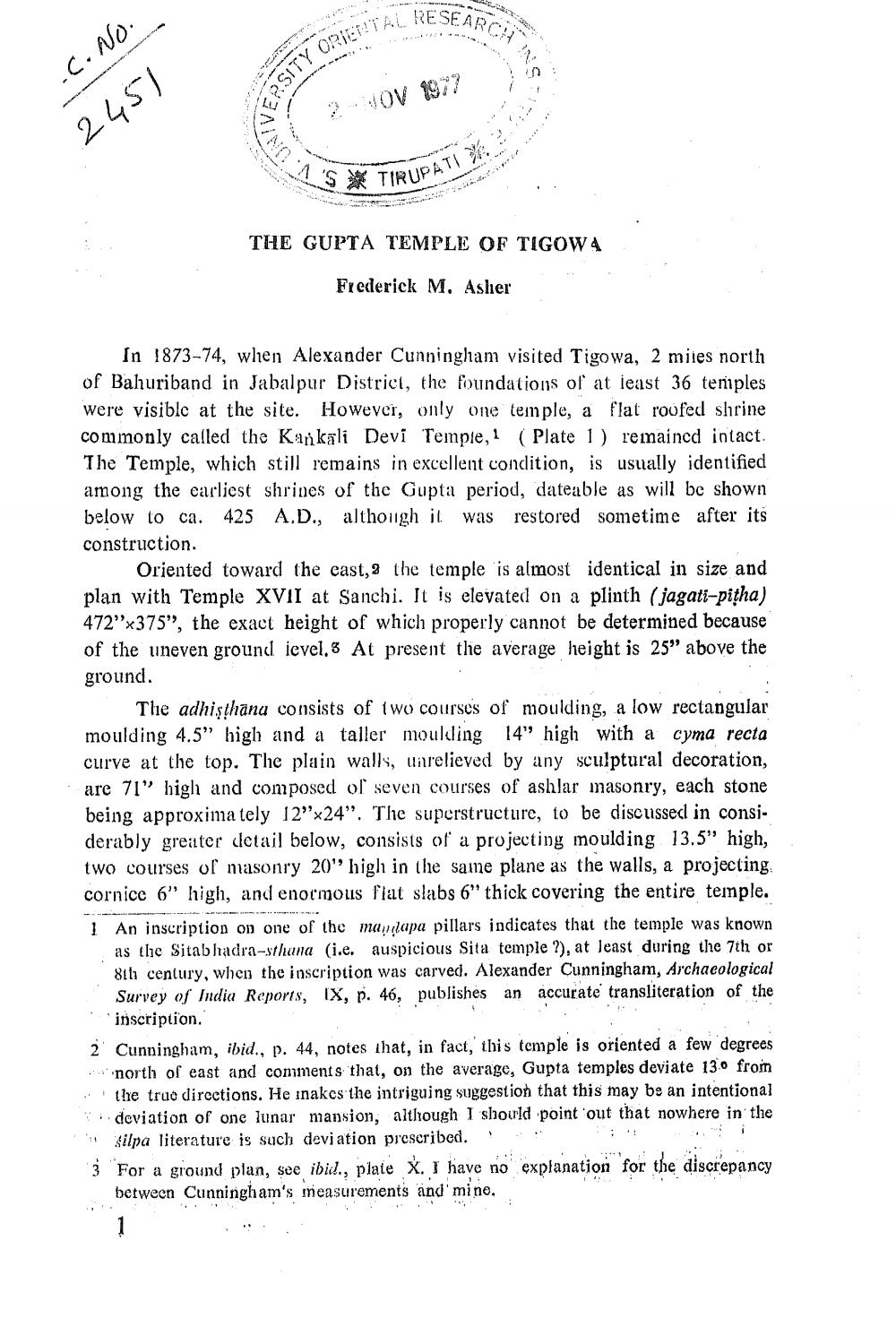Book Title: Sambodhi 1977 Vol 06 Author(s): Dalsukh Malvania, H C Bhayani, Nagin J Shah Publisher: L D Indology Ahmedabad View full book textPage 3
________________ .C.No. 2451 UNIL ORIENTAL RESEARCH RSITY 2 NOV 1977 4'S TIRUPATI N THE GUPTA TEMPLE OF TIGOWA Frederick M. Asher In 1873-74, when Alexander Cunningham visited Tigowa, 2 miles north of Bahuriband in Jabalpur District, the foundations of at least 36 temples were visible at the site. However, only one temple, a flat roofed shrine commonly called the Kankali Devi Temple,1 (Plate 1) remained intact. The Temple, which still remains in excellent condition, is usually identified among the earliest shrines of the Gupta period, dateable as will be shown below to ca. 425 A.D., although it was restored sometime after its construction. Oriented toward the east, 2 the temple is almost identical in size and plan with Temple XVII at Sanchi. It is elevated on a plinth (jagati-pitha) 472"x375", the exact height of which properly cannot be determined because of the uneven ground ievel. At present the average height is 25" above the ground. The adhisthana consists of two courses of moulding, a low rectangular moulding 4.5" high and a taller moulding 14" high with a cyma recta curve at the top. The plain walls, unrelieved by any sculptural decoration, are 71" high and composed of seven courses of ashlar masonry, each stone being approximately 12"x24". The superstructure, to be discussed in considerably greater detail below, consists of a projecting moulding 13.5" high, two courses of masonry 20" high in the same plane as the walls, a projecting cornice 6" high, and enormous flat slabs 6" thick covering the entire temple. 1 An inscription on one of the mandapa pillars indicates that the temple was known as the Sitabhadra-sthana (i.e. auspicious Sita temple ?), at least during the 7th or 8th century, when the inscription was carved. Alexander Cunningham, Archaeological Survey of India Reports, IX, p. 46, publishes an accurate transliteration of the inscription." 2 Cunningham, ibid., p. 44, notes that, in fact, this temple is oriented a few degrees north of east and comments that, on the average, Gupta temples deviate 130 from the true directions. He inakes the intriguing suggestion that this may be an intentional deviation of one lunar mansion, although I should point out that nowhere in the silpa literature is such deviation prescribed. i 3 For a ground plan, see ibid., plate X. I have no explanation for the discrepancy between Cunningham's measurements and mine.Page Navigation
1 2 3 4 5 6 7 8 9 10 11 12 13 14 15 16 17 18 19 20 21 22 23 24 25 26 27 28 29 30 31 32 ... 420
